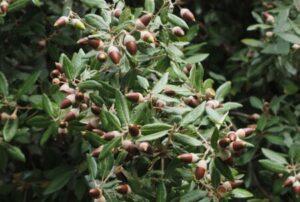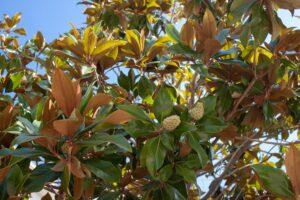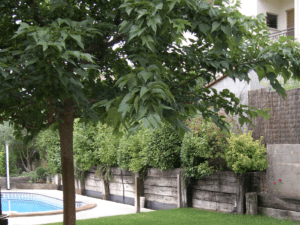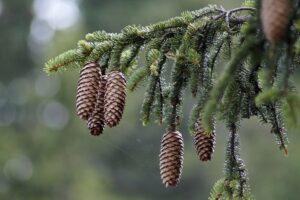Which trees are the most demanded in the gardens built by the Punt Verd team?
When you are working on the design of a garden, you have to take into account that all the elements that make it up (trees, plants, etc.) are in harmony. In addition, when choosing these elements, other factors such as climate, sunlight and shade and the size of the space must also be considered. Given that trees are a key part of private gardens, in this article we will talk about the 5 most common species that we can find in the gardens we are planning.
QUERCUS ILEX
This is one of the most representative trees of the Iberian Peninsula. It is also known by the name of holm oak and is of the monoecious type and belongs to the fagacia family. It has a fairly wide, dense and rounded crown, with dark green leaves of between 3 and 7 cm in size. Its fruit is the acorn and its height ranges from 5 to 20 meters.
MAGNOLIA GRANDIFLORA
From the *magnoliacia family, this tree is named after the botanist Pierre *Magnol. Slow-growing and evergreen, with a large flower (up to 20 cm) and a spectacular burnt colour which flowers between May and July. It is one of the most popular trees for private gardens because of its great beauty.
MORUS ALBA FRUITLESS
It differs from other mulberry trees in that it does not produce fruit (*Fruitless) and therefore does not litter the garden. It is a deciduous tree with a rounded shape and it grows to heights of 7-15 m. It has a good resistance and tolerance of fruiting, a good resistance and tolerance to high temperatures and is ideal for providing the garden with shade during the summer..
LIQUIDAMBARS
Tree of great beauty due to its height (between 25 and 40 m) and its copper-coloured palmate leaves in autumn, a colour which may vary according to the species. It is deciduous and has small grape-like flowers. It is so named because of the amber-coloured resin it produces. Among the best known varieties are *styraciflua, *acalycina, *orientalis and *formosa.
PICEA
Resembling the fir in shape, it is distinguished from it by the whorled arrangement of its branches, the pointed leaves and the thinner cones hanging at the end of the upper branches. It is an evergreen tree with about 35 different species and of great stature (between 40 and 95 metres in height).













